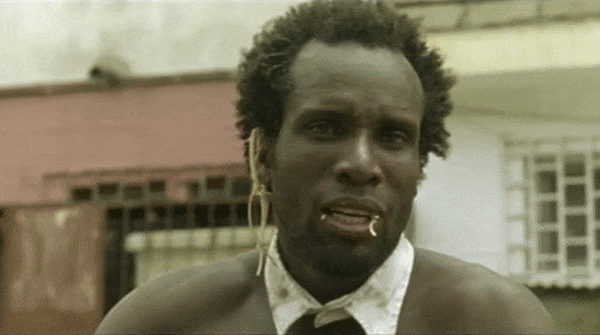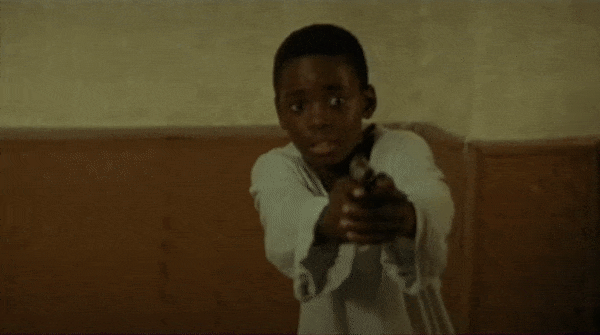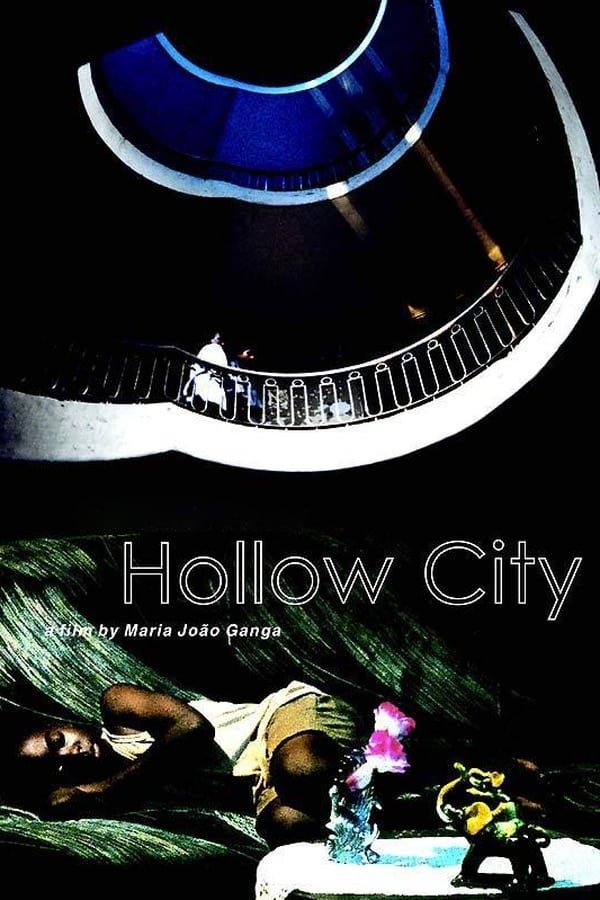Hollow City is a 2004 full-length movie directed by Angolan-born director Maria João Ganga. The film is one of the first to be produced in Angola since the end of the civil war, and the first film produced by an Angolan woman. Filming was done on location in Luanda, Angola. International versions of the film are in the Portuguese language with English subtitles.
The film centers around the life of an orphan named N'dala, who is taken to the city of Luanda after the death of his parents during the Angolan civil war. Wanting to return to his hometown of Bié, N'dala flees from the nuns who have saved him into the streets of the city. He wanders from place to place meeting various figures, such as a young man named Zé who tries to help him find a home. Later in the film N'dala is taken under the wing of a criminal named Joka who exploits him for his own uses.

***SPOILER ALERT***
F: Hollow City plunged us into the capital of Angola in 1991. We see what it would be like to live in a country in a constant state of war through the eyes of a 12-year-old boy recently orphaned by that same war - N'Dala. The boy has just escaped from a Portuguese nun (played by the Portuguese actress Ana Bustorff) who rescued him from his place of origin, some village in the province of Bié, which is located in the central region of Angola. Everything leads one to believe that there was a great massacre of civilians, as must have really happened in many Angolan villages), and N'Dala was left all alone and at the mercy of strangers.
K: Hello friends! This is our first feature film on this week's trip to Angola. And it again touches on a sore subject for Angola - the long war and its consequences. The director managed to take us to Luanda during the 90s. I confess that I was very surprised that the film was shot in 2004. The film is so atmospheric in terms of cinematography and you are truly taken back.
F: Hollow City plunged us into the capital of Angola in 1991. We see what it would be like to live in a country in a constant state of war through the eyes of a 12-year-old boy recently orphaned by that same war - N'Dala (João Roldan). The boy has just escaped from a Portuguese nun (played by the Portuguese actress Ana Bustorff) who rescued him from his place of origin, some village in the province of Bié, which is located in the central region of Angola. Everything leads one to believe that there was a great massacre of civilians, as must have really happened in many Angolan villages), and N'Dala was left all alone and at the mercy of strangers.
 |
| A pity that this guy wasn't an important character. |
K: I fell in love with this boy, N'Dala. His naivety and openness are captivating. And this naivety did not lead him to anything good. I was also sad that no one cared about this boy. A long war is killing everything human, leaving room only for the animal inside. Everything that happens on the screen leaves a trace of sorrow also through the music - the saxophone performed by Manu Dibango works very strongly here.
F: Yes! The music was something else. I've really enjoyed the jazzy stuff and it gave the picture a really cool vibe.
I think the film is praiseworthy for the simple context in which it is set - the first film directed by an Angolan woman, and the second film after the end of the civil war. Maria João Ganga shows us Luanda through a film adaptation inspired by Pepetela's novel The Adventures of Ngunga. Ngunga is a fictional character who is orphaned at the age of thirteen, when his parents are murdered, and joins MPLA guerrillas to fight against colonialism. The book was written in 72, when Angola was still a Portuguese colony. N'Dala and Ngunga share a very similar fate.
Although the film is super interesting for its uniqueness, I can't help but get half-eyed at the bad acting of the actors. For someone who doesn't understand Portuguese, they probably won't notice. But for me, it's a bit painful. The director could have tried a little harder at making her actors look good. Maybe she did. I can understand that no one in that country has had time to practice their acting. It's not easy when you're being drafted, hiding from bombs and gunfire or desperately looking for something to eat.
K: I agree with Freddy in this regard. The acting skills of most of the actors involved here leave much to be desired. I sometimes had a feeling, maybe this was the director's intention - to make the film more documentary-like, since what was happening on the screen was very reminiscent of this. Ana Bustorff played the worst, from such a nun and I would have wanted to run away. Very insipid and untrue. The film held me precisely because of João Roldan, who conquers with his eyes and smile.
F: Yeah, Ana Bustorff is far from being my favorite Portuguese actress. I can only remember her from very hysterical characters in a thing we call "Teatro de Revista" or in super unfunny TV shows.
 |
| Got to love that Kizomba dance 😂 |
F: This is a simple story with simple characters that culminates in a totally predictable ending. It was easy for Krasnaya and me to anticipate what was going to happen. The film failed to engage me. I think the main reason, once again, was the acting. It's fundamental that this be good so that we can get our minds 100% into a film.
K: I realized that N'Dala would never return to the beach, where he spent his happiest days in Luanda, when the nun and the priest appeared there asking about him.
F: Nice spoiler there. 😉 This is a recommended film to get a feel for what Luanda and its inhabitants might have looked like during the 90s.
K: I will support Freddie and say that the film can be watched, especially if you are interested in Angola.
 |
| Fudeu! |
Freddy's Score: 55/100
Krasnaya's Score: 50/100
FINAL SCORE

ZÉ MEETS N'DALA
KIZOMBA
BREAKING AND ENTERING
Our blog is being updated every day at 21:00


Comments
Post a Comment